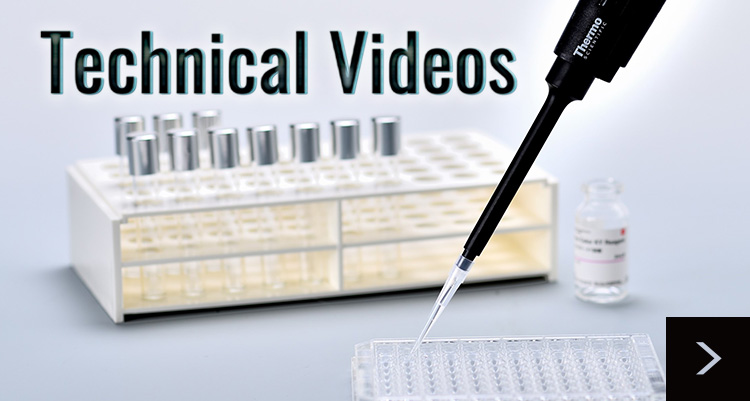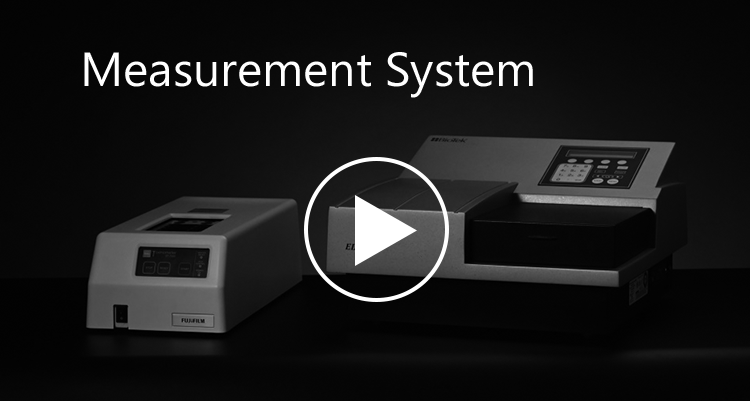Monocyte Activation TestLumiMAT™ Pyrogen Detection Kit
LumiMAT™ is a Monocyte Activation Test (MAT) to detect pyrogens. Pyrogen is a generic term for substances that cause body temperature rise in animals and humans. Parenteral drugs and medical devices which get in contact with patient's blood system must be free from pyrogens. The first developed test to detect a wide range of pyrogens was Rabbit Pyrogen Test (RPT). In RPT, samples to be tested are intravenously administered to rabbits and monitor the body temperature. Since RPT has problems with reproducibility, accuracy, and cost, Limulus Amebocyte Lysate (LAL) reagent has been widely used as the replacement. However, LAL reagent cannot detect non-endotoxin pyrogens, and RPT is still used in case LAL reagent is not appropriate. MAT is an in vitro pyrogen test developed as an alternative of RPT and it can detect not only endotoxin but also nonendotoxin pyrogens.
| RPT | LAL | MAT | ||
| Pyrogens | Endotoxin(derived from Gram-negative bacterial cell walls) | ✔ | ✔ | ✔ |
|---|---|---|---|---|
| Non-endotoxin Pyrogens(derived from Gram-positive bacteria, viruses, fungi etc.) | ✔ | Not-detectable | ✔ | |
Assay Principle
MAT is used to detect pyrogens that activate human monocytic cells to release inflammatory cytokines.
Conventional MAT
Culture PBMCs (peripheral blood mononuclear cells) and samples to be tested in microwell plate. Cytokines released from monocytic cells by exposure to pyrogens are measured by ELISA to detect pyrogens in the samples.
LumiMAT™
LumiMAT™ uses a monocytic cell line NOMO-1 in which a luciferase reporter gene is introduced to express luciferase protein in response to NF-κB signals activated by exposure to pyrogens. Because the expressed luciferase generates luminescence by reacting with the substrate, luminescence can be detected by a luminescence microplate reader to detect pyrogens in the samples.
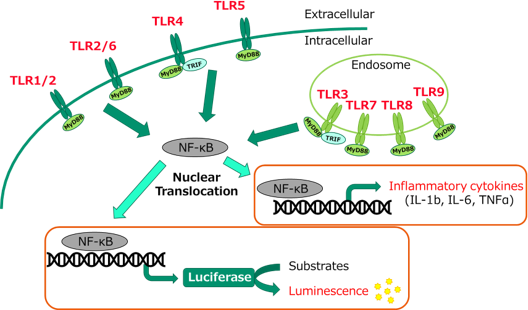
Features of LumiMAT™
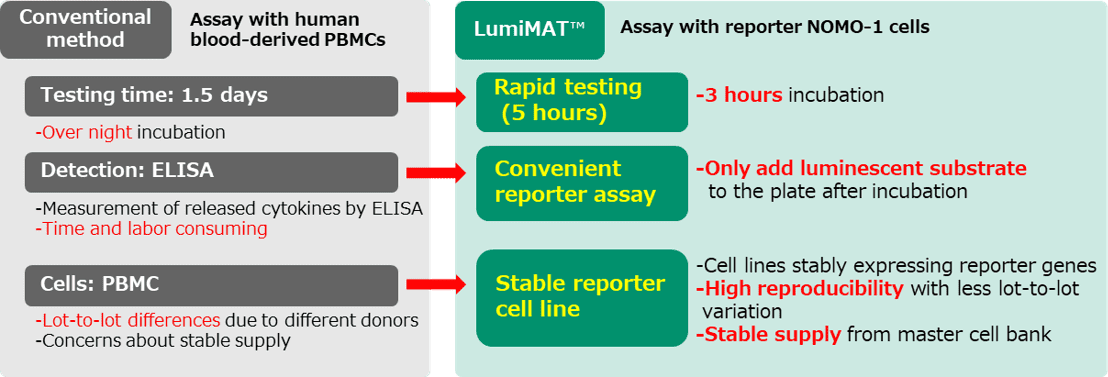
Assay Flow
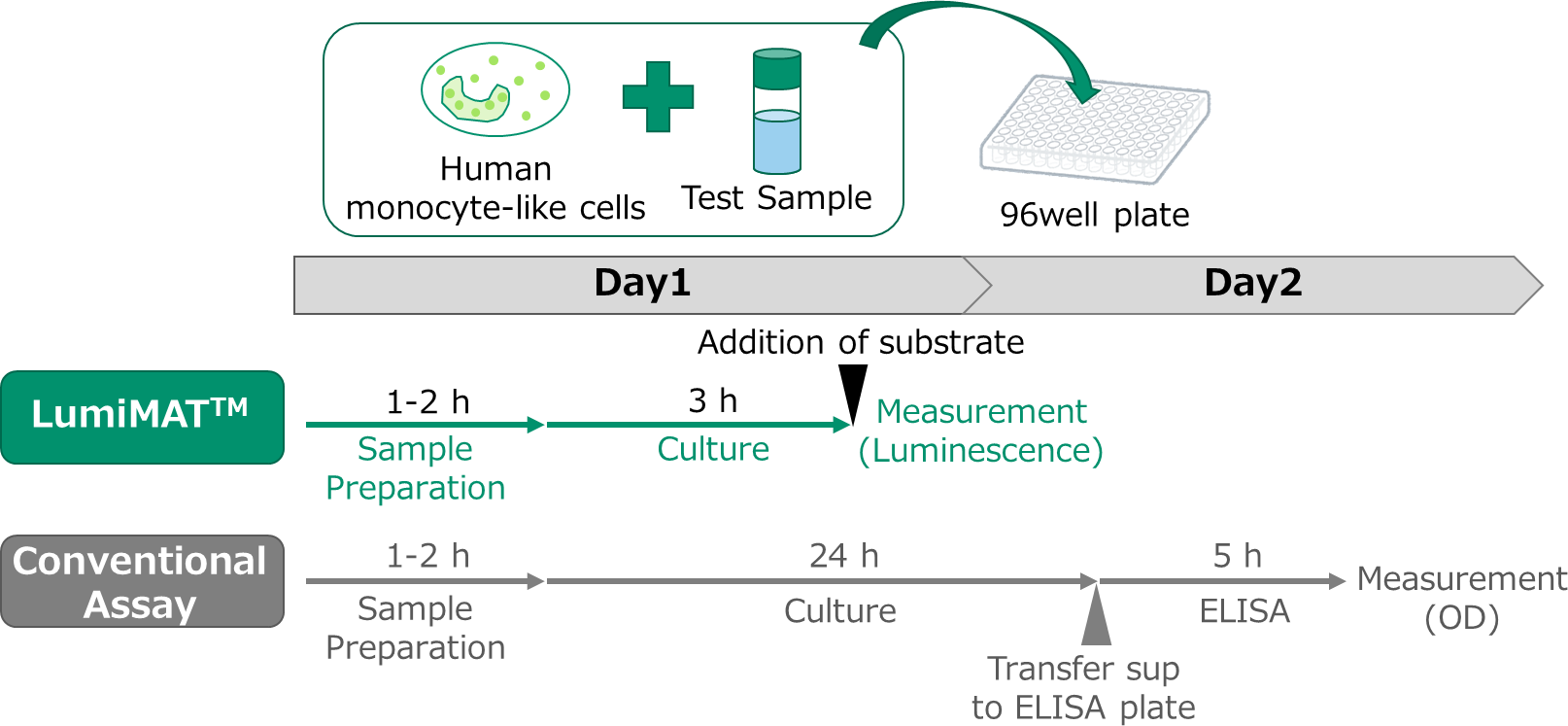
Add samples to be tested or standard endotoxin into microplate and add reporter cells and incubate for 3 hours. After the incubation add luminescent substrate to measure luminescence with a plate reader.
Compared to ELISA, this is a simple one-plate assay that suppresses inter-test variations. In addition, results can be obtained in about 5 hours, which is significantly shorter than the 1.5 days required by the conventional method.
Standard curve

EU:Endotoxin Unit
Create standard curve using reference standard endotoxin and calculate the concentration of pyrogens as Endotoxin Equivalents (EE)/mL.
Standard curve range: 0.0125 - 0.8 EE/mL
How to use LumiMAT™
Experimental Data
Reproducibility
Accuracy and precision were measured with three different lots of the LumiMAT cells (n=4, 3 assays for each lot). Six concentrations of standard endotoxin (USP-RSE) were spiked. Measured the concentrations of endotoxin (EU/mL) of the spiked samples from the standard curve and calculated accuracy and precision.
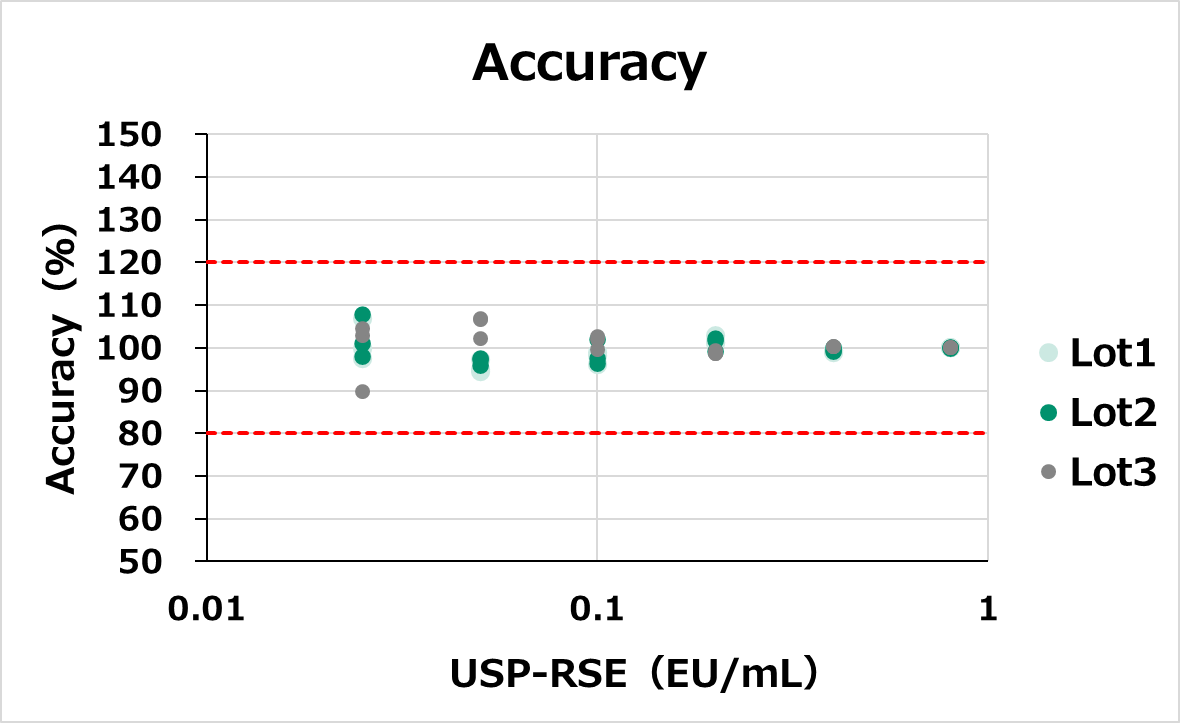

Everly lots had high reproducibility.
Accuracy [measured value/true value] : within ±10%, Precision [CV of measured value] : within 20%
Reactivity to Non-Endotoxin Pyrogens (NEPs)
NEPs which react with each Toll-like receptor (TLR) were added at several concentrations, and the concentration of each NEP was calculated as EE/mL from the standard curve. Y axis: EE/mL, X axis: Spiked concentration of NEP
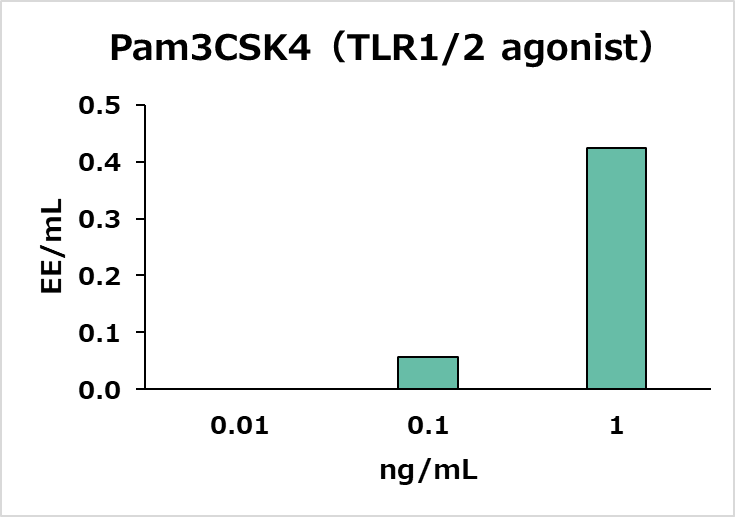
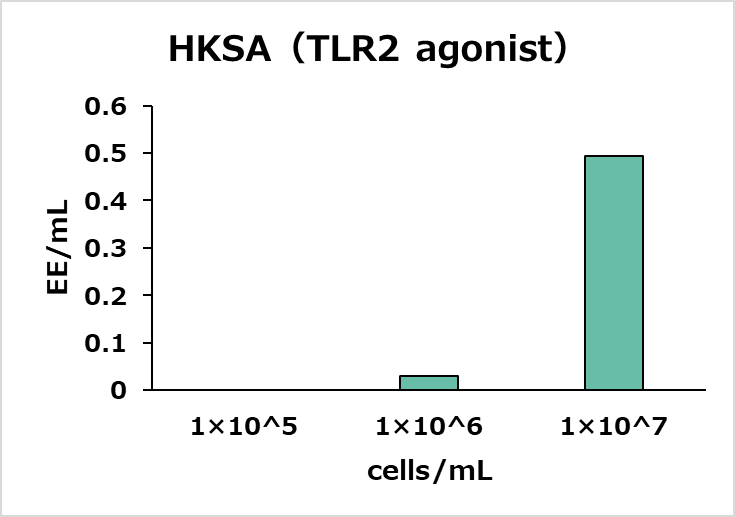
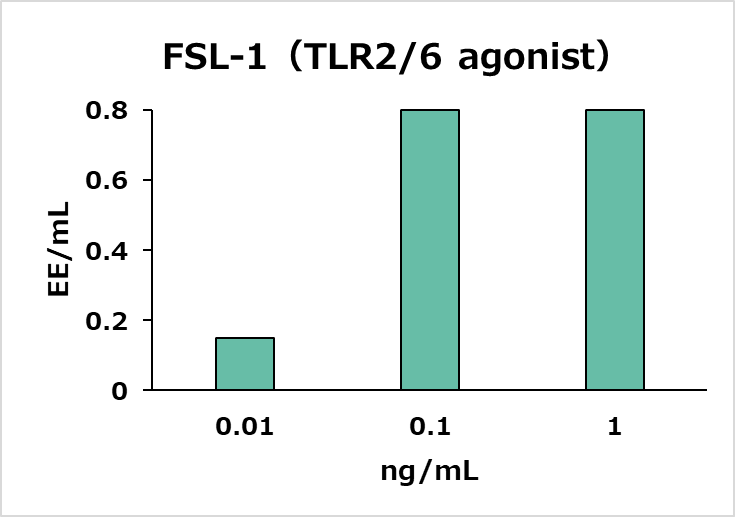
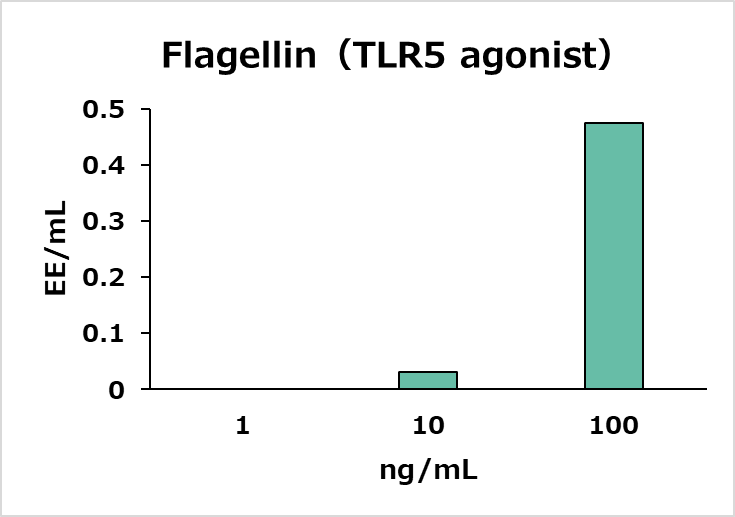
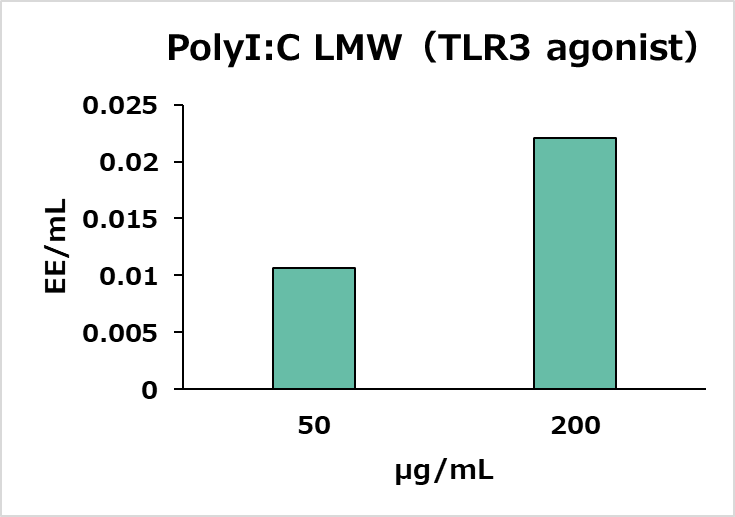
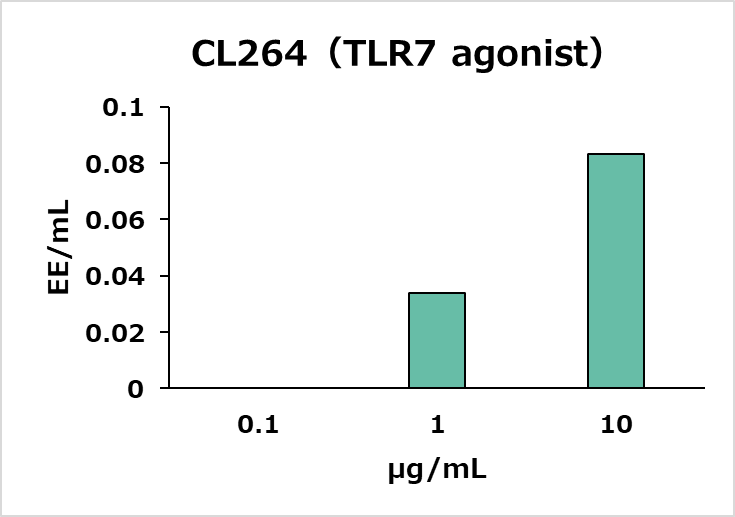
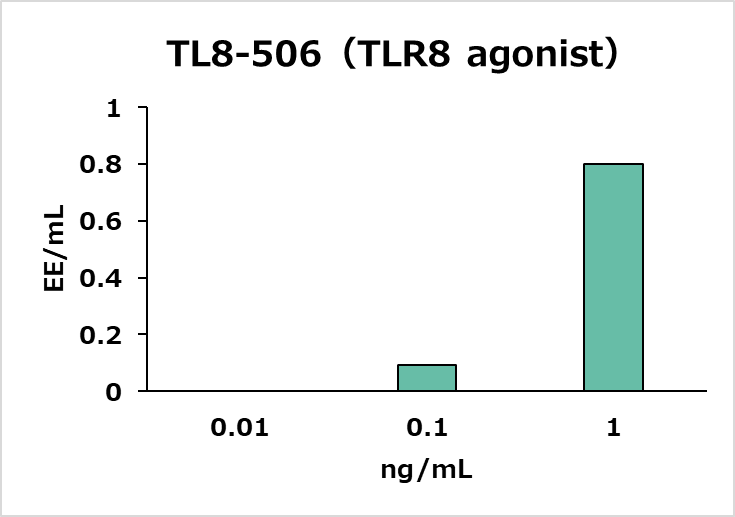
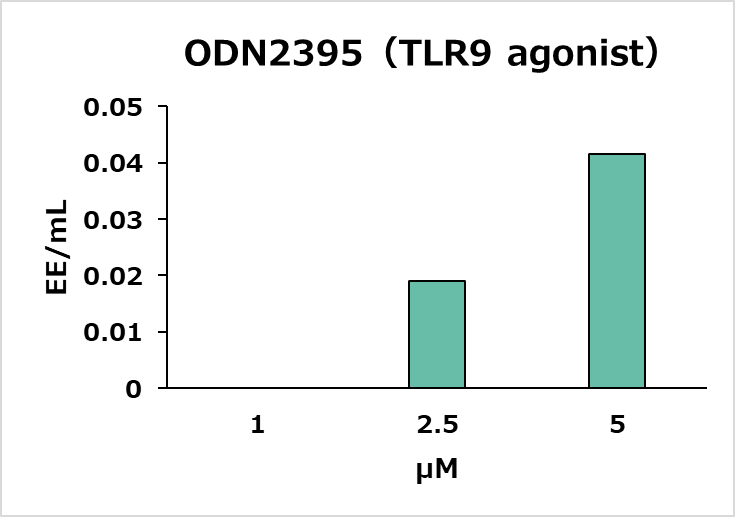
All tested NEPs were detected.
Tests for interfering factors
- 1. Spike recovery test using pharmaceutical products.
Standard endotoxin was added to each drug product and the recovery rate was calculated.
Drug MVD* Fold-dilution Spike recovery (%) n=3 Interference** 0.1 EU/mL 0.4 EU/mL 0.8 EU/mL Albumin
25%I.V. 5 g/20 mL480 10 121.6 98.9 97.5 N 100 134.8 119.4 110.3 N 400 109.5 110.3 108.0 N Aciclovir
25 mg/mL500 10 67.5 63.7 50.2 N 100 89.7 87.8 82.3 N 400 96.0 95.6 99.2 N Epoetin Alfa
750 I.U./0.5 mL12000 100 99.3 103.1 105.2 N 500 92.9 100.5 102.6 N 1000 87.9 98.0 98.9 N Romosozumab
105 mg/1.17 mL10200 100 109.9 110.5 112.6 N 500 94.9 94.3 98.6 N 1000 95.0 92.0 92.3 N *MVD : Maximum Valid Dilution **No interference : 50<Recovery(%)<200
Recovery rate were within 50-200% for all four pharmaceuticals.
- 2. Spike recovery test using pharmaceutical raw materials
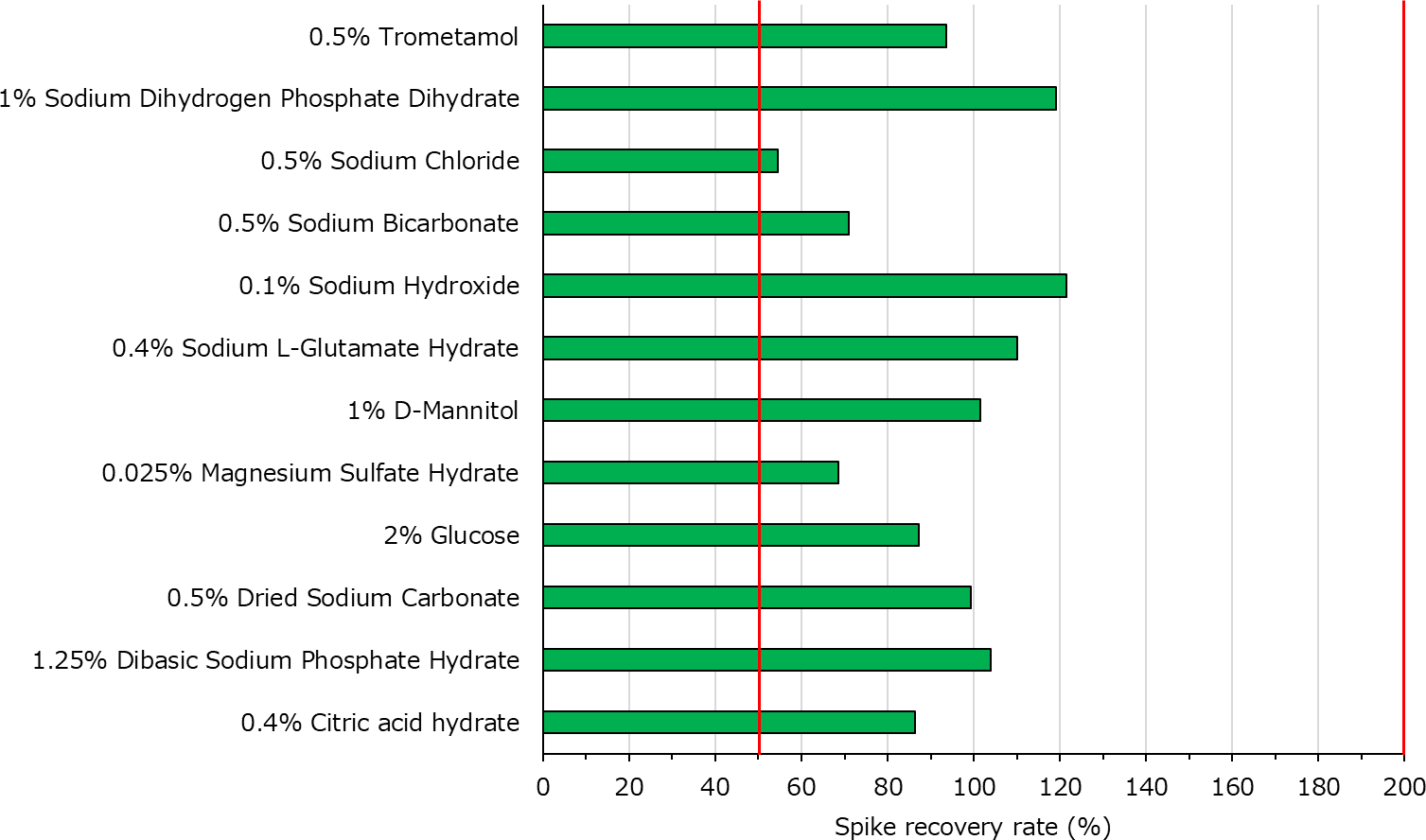
LumiMAT™ is applicable for a variety of samples.
Product Information
| Catalog No. | Product Name | Quantity | Storage |
|---|---|---|---|
| 298-36991 | LumiMAT™ Pyrogen Detection Kit - Cells | 96 Tests | -80℃ |
| 297-96801 | LumiMAT™ Pyrogen Detection Kit - Reagent Set | 96 Tests | -20℃ |
Kit Components
- ◎LumiMAT™ Pyrogen Detection Kit - Reagent Set
- Assay medium 20 mL
- Dilution medium 100 mL
- Luciferase assay buffer 12 mL
- Luciferase substrate 240 μL
- ◎LumiMAT™ Pyrogen Detection Kit - Cells
- LumiMAT™ Cells 350 μL
Both LumiMAT™ Pyrogen Detection Kit - Cells and LumiMAT™ Pyrogen Detection Kit - Reagent Set are necessary for assay.
Related Product
| Catalog No. | Product Name | Quantity |
|---|---|---|
| 292-37011 | Toximaster™ FQC1 Software PC Set E for LumiMAT™ | 1set |
LumiMAT™ uses NanoLuc® Technology; NanoLuc® Technology is licensed from Promega Corporation. Licensed Patents: U.S. Pat No. 8557970 and U.S. Pat. No. 8669103, and all patents and patents pending which claim priority to the same priority application(s) as U.S. Pat. No. 8557970 and U.S.Pat. No.8669103. NanoLuc® is a registered trademark of Promega Corporation.


